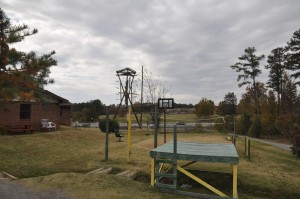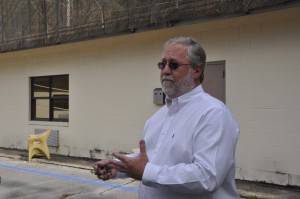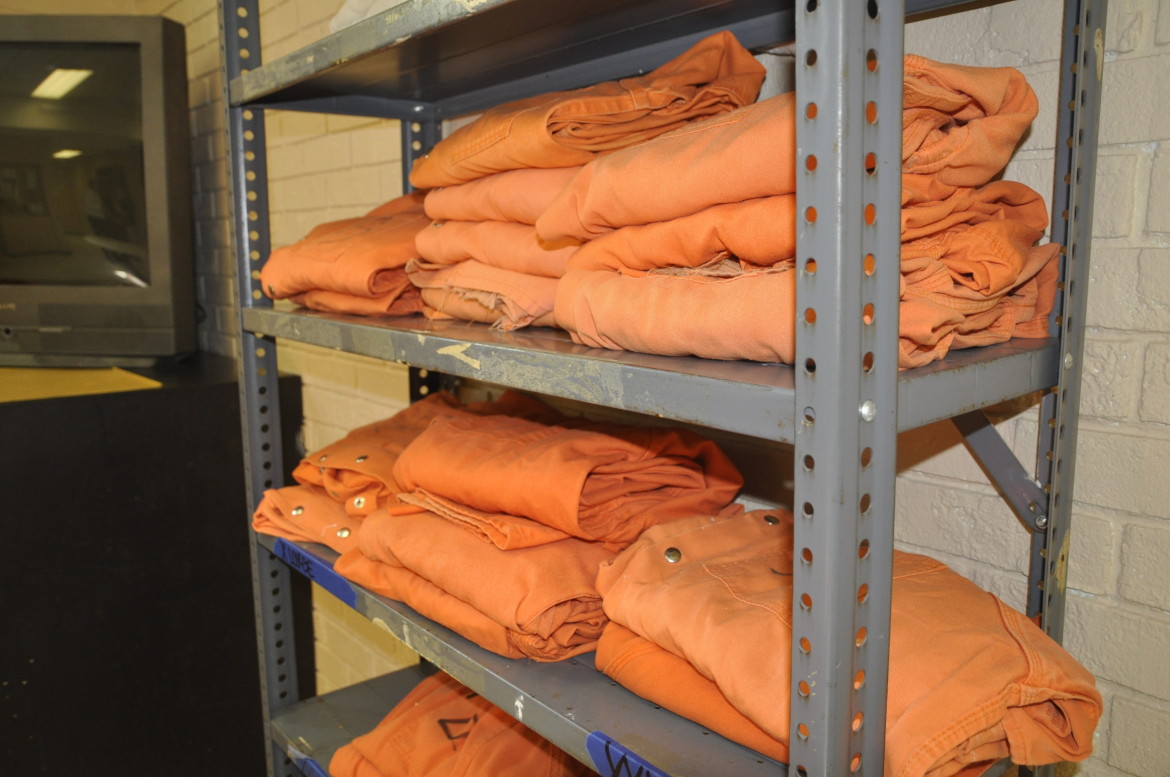 Across the nation, perspectives on juvenile detention are changing. Several experts share how they believe modern juvenile justice is implementing more rehabilitative models and what the ultimate dividends may be for both young people and U.S. society as a whole
Across the nation, perspectives on juvenile detention are changing. Several experts share how they believe modern juvenile justice is implementing more rehabilitative models and what the ultimate dividends may be for both young people and U.S. society as a whole
Mike Rollins, executive director of Coosa Valley Youth Services (CVYS) in Anniston, Ala., has been at the facility for more than 30 years. His experiences, however, aren’t just limited to working there.
At 17, Rollins walked into CVYS for the first time. “I was engaged in drug use,” Rollins said. “I was a teenager, and my parents, really, became aware of my activities and turned me into the police department.”
After being released by the Department of Youth Services, he returned to the facility looking for part-time employment. Starting off in a maintenance position, he eventually rose to the position of executive director after working at the facility for more than three decades.
He notes the smell of fresh paint outside one of the detention center’s visitation rooms. For a building built in 1974, he said, the facility is in very good condition.
Rollins’ facility is divided into three primary buildings: a detention center, home to an all-male juvenile population; the Lewis Academy, a barracks-style center for non-delinquent young males; and the Attention Home, which contains an exclusively female population.
“I would say, typically, we’re going to have a male youth, more often than not, [a] Caucasian,” he said. “Multiple theft or assault, or maybe a little more serious, possibly. We get a fair number of domestic violence type cases.”
Rollins said that the typical CVYS resident is between the ages of 15 and 17, with the average juvenile staying at the facility for “a couple of weeks” while their cases are being processed. If specific needs are required, like a psychiatric evaluation or specialized treatment placement, he said their stays are generally a little longer.
The facility, deemed by Rollins as a “publicly-funded, non-profit corporation,” serves 11 combined counties in the northern and central Alabama region. Geographically, the facility serves a population consisting of more than 700,000 people.
In such a vast area, Rollins said that it’s difficult to make generalized statements about the backgrounds of the facility’s residents. “There’s a lot of variation in some of those counties,” he said. Most of his residents typically come from single parent homes, are behind in school and generally have multiple offenses, mostly, “minor stuff,” he says like truancy and running away from home.
“But we also get first time offenders,” he said. “We also get professional families’ children. We’ve had law enforcements’ children, physicians’ and attorneys’ children, we’ve had politicians’ children. We’ve had children from non-broken families.”
While CVYS doesn’t track parental and guardian abuse as a statistic, Rollins said that it’s likely a “fairly common” piece of what the juveniles have experienced prior to arriving at his facility.
“Whether it’s physical, whether it’s mental, emotional or whether it’s sexual,” he said, “it would be hard to guesstimate, but it’s probably more than most people would imagine or realize.”
The Importance of Personnel
Over the last decade, numerous juvenile justice reform initiatives have come to pass, with major implications for juvenile detention facilities. With many states turning towards community-based alternatives and other diversion programs, the core “function” of juvenile detention in the 21st century has undergone sweeping changes, with many advocates and system-involved personnel adopting policies and procedures that emphasize rehabilitative and therapeutic services in lieu of strict “punitive” measures.
detention facilities. With many states turning towards community-based alternatives and other diversion programs, the core “function” of juvenile detention in the 21st century has undergone sweeping changes, with many advocates and system-involved personnel adopting policies and procedures that emphasize rehabilitative and therapeutic services in lieu of strict “punitive” measures.
Reclaiming Futures Justice Fellow Eric Shafer was the Chief Probation Officer for the Montgomery County Juvenile Court in Dayton, Ohio for eight years. While he believes the fundamental purpose of juvenile detention is to protect the public from young people that have committed very serious crimes, he also thinks that juvenile detention serves a greater purpose for both youth and society.
“I think you can do a lot of fantastic things in detention as long as you are serving the correct kids,” Shafer said. He ultimately believes that many organizations, however, are over-using detention for status offenses and low-level first-time offenders.
“There are a number of very positive communities that are really moving forward to reform use of detention,“ he said, “but if I had to make a judgment, we still have a long way to go in the country.”
Due to budget cuts, he believes many facilities are incapable of bringing in the best rehabilitative programs. But if detention centers “invest” in qualified and devoted personnel, he stated, there’s still an opportunity for facilities to provide excellent therapeutic services for residents. “I think the key to making a detention center a positive experience lies in staff,” he said. “Although a number of courts have had to cut back on staff, training and development of staff, I think, is the key in being successful when youth are detained.”
Staff shouldn’t just be there to “hold them down,” he believes. If personnel are able to provide high-quality therapeutic services with young people in detention, Shafer said that even budget-strapped facilities have the capability to provide excellent rehabilitation services for juveniles.
Similarly, Rollins believes successful youth rehabilitative services hinge on supportive and impassioned personnel.
“You can have a structure, you can have a best practices program, anywhere in the country,” he said. “You can try to replicate what people do successfully, but if you don’t have the right people running or operating it, it’s going to fall on its face.”
Rollins said that most of his staff have been working at CVYS for years, some of them even decades. “We try to keep people, we try to train them to be better at what they do.”
He believes that it is more important to “inundate” juveniles with services during detention stays than simply provide short-term housing. “We all know that a lot of these kids don’t see themselves in the greatest of lights,” he said. “We’re not going to boast them up to feeling like celebrities, but we want them to feel like they’ve got a valid, strong place in the world.”
New Perspectives on Treatment and Rehabilitation
“Juvenile detention in the 21st century should be about keeping kids and communities safe,” Rollins believes. “The kids that go to detention need to be the kids that, if they’re not in detention, somebody’s at risk - either that child, or somebody in the community.”
He believes that juvenile detention shouldn’t be thought of as a punishment, but as an opportunity to get juveniles on the path to becoming better students and citizens.
“We understand that these teen years are really, really tough times for a lot of people,” Rollins said. “If we can give them as many tools as they get, holistically, [we] stand a lot better chance of success when they leave us.”
 Rollins believes that, in addition to counseling and academic services, physical activity serves as an important component in rehabilitating juvenile offenders. Boys at the detention center shoot hoops at a carpeted basketball court, and residents at the Lewis Academy regularly engage in rappel tower training exercises. Many of the female residents are involved in yoga programs and participate in equine therapy sessions. Rollins is a strong proponent of horticultural therapy for adolescents - he said that the process of raising and nurturing a plant builds many of the same empathetic tendencies required to rear a child.
Rollins believes that, in addition to counseling and academic services, physical activity serves as an important component in rehabilitating juvenile offenders. Boys at the detention center shoot hoops at a carpeted basketball court, and residents at the Lewis Academy regularly engage in rappel tower training exercises. Many of the female residents are involved in yoga programs and participate in equine therapy sessions. Rollins is a strong proponent of horticultural therapy for adolescents - he said that the process of raising and nurturing a plant builds many of the same empathetic tendencies required to rear a child.
His facility uses a Polycom videoconferencing system - the very device used in some of his residents’ court proceedings - to take students on “virtual field trips.” He believes that involvement with the community is essential, but realizes there are certain challenges - primarily, confidentiality issues - that make outside interaction problematic. Even so, he notes that positive feedback from outside the facility often motivates his residents.
“We don’t want to be ostracized from the community,” he said.
In Montgomery County, Shafer said that juvenile rehabilitation begins before youth even enter detention facilities, as every young person that enters the juvenile justice system is processed through an intervention center, which is open 24 hours a day.
“A kid comes to us, and we do an initial screening on that young person to determine what kind of needs they may have,” he said. “If they indicate they do have some need, they’re going to move on to a standardized assessment that’s going to tell us ‘hey, does this young person have a substance abuse problem and do they have some mental health needs?’”
After being screened, administrators help young people coordinate services, either in detention or elsewhere in the community. “We’re able to link that person to substance abuse treatment, mental health treatment, issues with treatment in school, whatever, they need,” Shafer said.
“A lot of times, we will make phone calls, set up an appointment for them, maybe even give them a ride to get that relationship started,” he said. “We lose a lot of young people in this phase, because we leave it up to them to make sure they get their next appointment.”
By coordinating services, Shafer said that the model prevents many young people from “falling through the cracks” en route to obtaining treatment. Statistically, he said that young offenders have greater likelihoods of sticking with intervention services if they attend the first three meetings.
“When they complete treatment,” he said, “we’re able to move them on to bigger and better things, getting them into their community, moving them into all kinds of opportunities.”
Building Better Futures
“I think that, from a community perspective, and particularly, the schools’ perspectives, a lot of people look down on the kids that come here,” Rollins said. “When they come in, there may be fear, trepidation, those kinds of things, or there could be bravado, feeling like a tough guy.” He said that it’s his job to help these young people come “back to reality,” to show them that their stay at CYVS could be a strong and progressive experience.
kids that come here,” Rollins said. “When they come in, there may be fear, trepidation, those kinds of things, or there could be bravado, feeling like a tough guy.” He said that it’s his job to help these young people come “back to reality,” to show them that their stay at CYVS could be a strong and progressive experience.
“We need, as a unit, to make an impact on those kids right away,” he said. “Our goal is to make sure it’s not dead time, and that it’s truly productive time, that we clean them out, clean them up, help them get healthier, help them get their mind stronger and help them understand their place as a juvenile in this world is to be a student.”
Shafer said that therapeutic services allow young people in detention the opportunity to develop relational and social skills that will ultimately help them better interact in society. “A lot of times, young people don’t have skills to just communicate,” Shafer said. “As a result, they result to violence or they treat people the way they really don’t want to treat them.”
Methods-based practices like Multi-Systemic Therapy (MST) and Functional Family Therapy (FFT), he said, have been proven to have positive outcomes for those involved in the juvenile justice system. “The payoff is that you’re going to have young people that are better prepared,” he believes. “I don’t mean that they have a new degree or training in this or that, but I think they’re better individuals. They know better how to think before they act, they know better how to run back into their peers and solve problems themselves.”
Rollins also said that the juvenile population is in dire need of “life management skills.”
“I think it’s important that we as a culture - a country, a people - help kids see themselves differently,” he said. “We need to help them visualize themselves as successful, as people with opportunities for a future, as being able to learn, as being employable.”
Rollins’ summarized his philosophy on the purpose of juvenile detention as, ultimately, a character-building process.
“What we do here is to try and teach kids that you are capable, you can be a good person, you can be as good as you want to be, you’re going to get the respect that you give [and] we’re going to support you if we can,” he concluded.
“If there’s any way we can help you become a better person, that’s what we’re here for.”
Photos by Ryan Schill.
